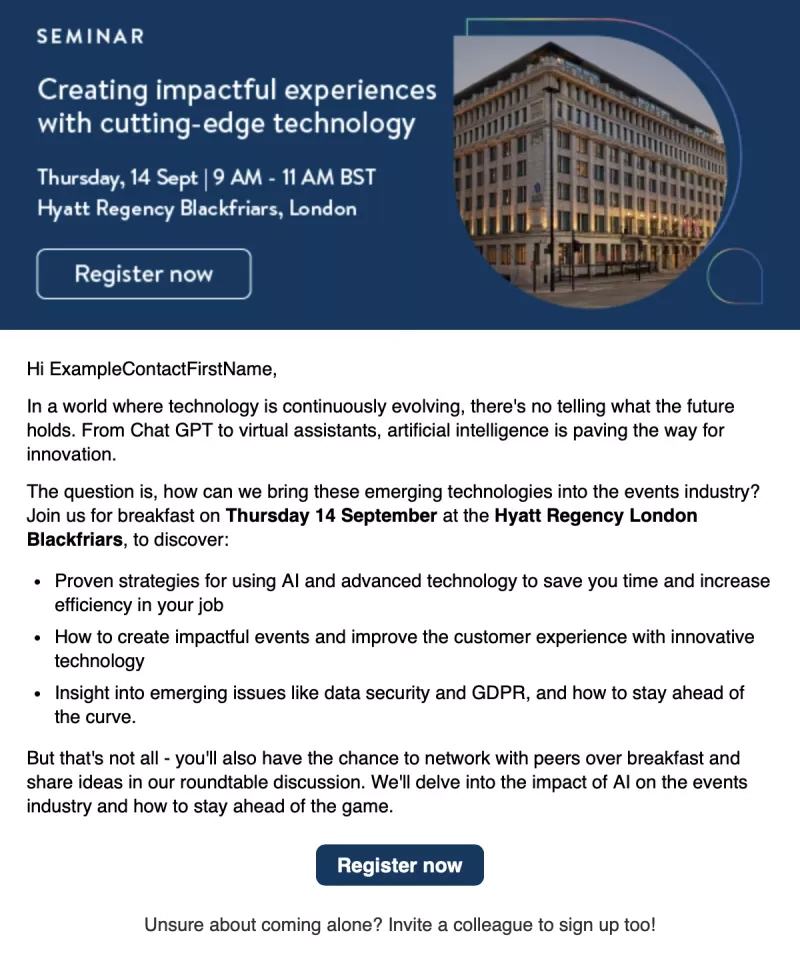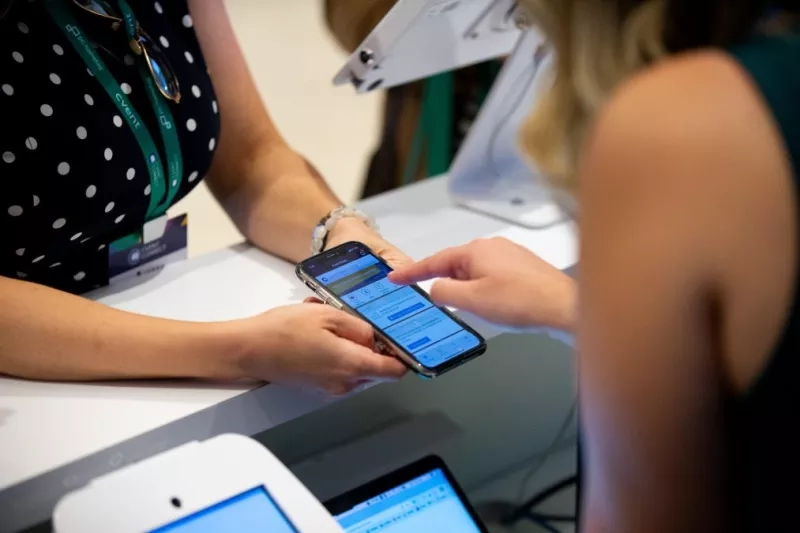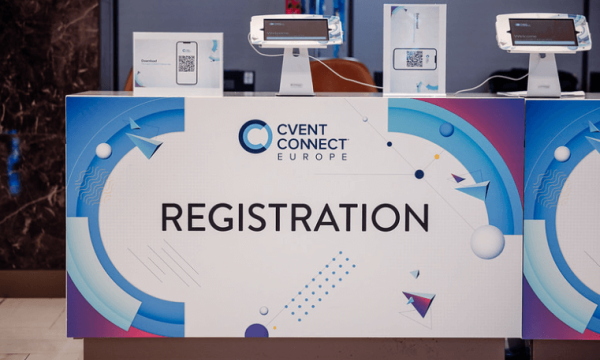Experiencing the disappointment of attendee no-shows can be very disheartening, especially after all your tireless effort to plan or promote your event.
If you’ve experienced the disappointment of attendee no-shows, you’re not alone. No-shows are often considered par for the course for event marketers and planners - especially in the current climate of hybrid and remote working, where enticing people out of their homes to attend events is even harder.
But there are things you can do to reduce the risk of people changing their minds, attending another event, or simply deciding on a whim to not turn up.
Add these 13 tips to your event marketing arsenal to reduce the risk of low attendance at your events.
1. Add paid add-ons to boost perceived value
When there’s no financial commitment to attend, it becomes all too easy for registrants to change their minds or attend another event.
So, if your organisation hosts free-to-attend events, consider introducing a few paid options as well.
For example, at our annual user conference, Cvent CONNECT Europe, there is a fee for the in-person experience, which includes three days of exclusive sessions, hands-on training, and networking opportunities.
By offering additional benefits such as a breakfast networking place or a speaker ‘meet and greet’ for a small additional fee, you can secure a stronger commitment from those registrants who are willing to invest a bit more.
Plus, when people who are still considering whether or not to register see that your paid add-ons are selling out, it creates a sense of urgency to secure their place for such an in-demand event.
2. Create FOMO (Fear Of Missing Out)
Nobody likes to think they’re missing out. So, by building a sense of anticipation around your event, people will feel more inclined to show up.
Communication is key here. Actively engage your event’s community on their LinkedIn or Facebook groups, get them excited about what they’ll experience and inform them of opportunities to meet one another at your show.
Make it easy for people to share their excitement about attending your event with their networks. Provide them with visuals they can post to social media upon registration and encourage them to use your dedicated event hashtag.
Tease your programme and speaker announcements to build intrigue and anticipation across social channels. Creating a ‘social buzz’ around your event will attract wider interest, which may result in more registrations or ticket sales.
In addition, ensure your promotional content features video testimonials, highlight reels and other FOMO-inducing marketing assets.
3. Communicate the real value of attending
If you communicate the value of attending your event, people will have more reason to show up and engage.
It’s not just about communicating the date, time and location of your event; it’s also about including details like what attendees will learn from the event and other key takeaways. Here's an example from one of our product seminars:
Maybe your attendees could receive access to on-demand follow-up content when they scan their badge on entering a particular session. Or, perhaps your headline sponsor could provide prizes for the highest in-person engagement scores, as recorded by the app each time an attendee checks into a seminar, takes a survey, asks a question, adds to a poll, or gets scanned by an exhibitor.
Make sure to personalise your event communication so that no one ever feels like they’re just a number. ‘Numbers’ don’t feel an obligation to attend.
Plus, it’s important to ensure your event is fully accessible by offering a live stream or dedicated virtual experience. But don’t let it be at the expense of your in-person offering. Differentiate between the online and the in-person experience and communicate the benefits of each.
4. Use an event app to engage
Encourage or incentivise registrants to download your event’s app once they’ve registered by clearly communicating all the benefits of being able to use the app before and during your event to schedule meetings, engage with speakers or win prizes.
Then, use push notifications to announce speakers and to keep the pre-event excitement building by reminding registrants of all the networking, learning and development opportunities they’ll gain from attending.
Once registrants start using your event’s app to schedule meetings with other attendees or sponsors, or to plan their on-site schedule by reserving seats in different sessions, they’re showing a genuine commitment to attend.
5. Use a pre-event online check-in
In the weeks leading up to your event, encourage registrants to download their badge or access their QR code, which can then be scanned on arrival for an automated printed badge.
It is not only more environmentally friendly, but it’s also a psychological confirmation of their intent to attend.
It will also speed up your on-site registration process and provide you with a picture of those who may not be attending well in advance, allowing you to follow up on potential no-shows with targeted calls and messaging.
6. Ensure your event is accessible and inclusive
Almost 22% of the UK population has a disability, according to the World Health Organisation. Across Europe, the number is higher at 24%.
If someone with a disability registers for your event and then learns that the venue isn’t fully accessible or enquires about sign language interpreters and is told that you don’t provide them, they’ll become a no-show and could influence others not to attend as well.
Ensure you’re not discriminating against physical and non-visible disabilities by asking the right questions at the point of registration and working with your planning team to incorporate accessibility into your event design.
Areas to consider include wheelchair access, adjustable height lecterns and posser tables, sign language interpreters, captioning services, larger print graphics and signage, plus facilities for service animals.
To cater for people with neurodivergence, your event should have sensory-friendly environments, quiet areas of respite when needed, and prior notice of changes to schedules or routines.
7. Keep in contact
Keep your event community engaged throughout the year - not just in the run-up to your event. People are more likely to show loyalty and attend if they’ve had regular interactions with your brand and gained value from your year-round content proposition.
Use the visitor data from previous events to target potential attendees with webinars, networking events, newsletters, and other regular communications.
Any registrants who still fail to attend should be followed up with to discover why they couldn’t come, what they may need, and how you should direct your marketing efforts in the future.
Offer no-shows on-demand access to the sessions they missed and bring them into your marketing cycle of year-round content and activity.
Remember, people who know their non-attendance is being monitored are more likely to show up next time.
8. Get feedback to improve personalisation
Don’t just rely on post-event feedback surveys to steer your marketing and content plans for the year ahead. Asking for feedback should be something you do throughout the year.
Get to know your visitor community and allow them to help your planning team shape the event’s content through focus groups, steering committees, lunch clubs and other feedback forums.
If last year’s attendees feel more invested, having helped shape the content for this year, they are more likely to return and tell their friends and colleagues.
9. Educate people on what non-attendance means
If you truly considered that your non-attendance would have an environmental impact, result in food wastage, and incur a potential cost for the organiser, would you still fail to show up to an event without a valid reason?
If you are serving food or paying a per-person cost, ensure your audience knows that you need an accurate delegate count.
We’re all human, so find ways to let people know the impact of failing to let you know that their plans have changed.
10. Issue CPD points
For educational or training events, provide a certificate of attendance or get your event accredited to offer Continuing Professional Development points for those who attend the full content.
There are thousands of CPD-certified events around the world and people seek them out to further their learning and development. After registering as a CPD provider, you can submit activities to the body’s Assessments team for training and event certification.
11. Make the venue the star of your show
Consider the appeal of your chosen venue. Many people will be curious to experience a venue they’ve never been to before or stay in a luxury hotel paid for by their company.
Never underestimate the draw of a unique or unusual event setting. Who wants to miss out when friends or colleagues are all posting photos of a spectacular venue or location on Instagram and Facebook?
12. Partner up to amplify your message
Sponsors, exhibitors, speakers, and your chosen venue are all invested in the success of your event, so they should all be helping to guarantee attendance.
Plan joint marketing campaigns, share and repost each other’s social media posts, and collaborate on ways to entice more people to come. Maybe one of your speakers has published a book and is happy to give away signed copies after their keynote, or perhaps your venue can offer discounted hotel room nights.
Only by partnering closely with everyone invested in the success of your event will you unearth ideas that may help and persuade more people to show up.
13. Make it simple to cancel
It’s a fact of life that even if you’ve carried out all our advice, there will still be some people who won’t make it to your event due to emergencies or unforeseen circumstances.
It’s important to have an accurate idea of numbers so that you can alter quantities of food and drink or let people on a waiting list know that places are available. So, make it easy for people to tell you they’re not coming.
You can do this by including a direct telephone number or email address on all communications, plus the event website and reiterating why it’s important to let you know if plans have changed.
How to get people to attend webinars or virtual events
It’s not just in-person events that suffer from audience attrition. Your virtual or webinar audiences could be based at home or in the office, which means they’re surrounded by potential distractions and reasons not to log on. Remember, you’re competing for their attention against that last-minute task, unexpected phone call, a knock at the door or simple forgetfulness.
Use our five top tips to remind registrants of the importance of attending your virtual event or webinar and don’t let your online audiences dwindle.
- Send automated calendar invites to the registrant the moment they sign up. This will ensure it remains visible and reduces the chances of a diary clash. It also means registrants will receive calendar notifications and be able to directly access your virtual event from the link embedded in their online diary.
- Send out a series of personalised emails in the run-up to your webinar to nurture interest and promote FOMO. It’s not just about detailing the essentials such as date, start time, agenda and the access link but also providing reasons why your event is ‘unmissable’ and what viewers will take away.
- Encourage your speakers and presenters to promote their involvement in their networks. Make sure you share or repost for added social amplification.
- Incentivise registrants to stay logged on and engaged for the whole webinar. Ways to achieve this include letting them know that at the end of the broadcast, they’ll receive a product discount, a link to a free eBook or some other prize for participating.
- Make your webinar or virtual event available to watch on demand. Digital content is reusable content so promote your on-demand broadcast with edited clips on social media and by sending out emails, giving new audiences or those who registered but couldn’t attend a chance to watch. Create a video library and bundle up similar webinars to create a mini-series.
Win the battle for attention
For event marketers, ensuring high attendance rates for in-person and online events has always been a significant challenge. With so much competition for people’s attention, leaving attendance to chance is no longer an option.
However, with a marketing and planning strategy that makes the most of technology, personalisation, and engagement tips and tricks, you can ensure that when people say ‘we’ll be there’, they really will mean what they say.









